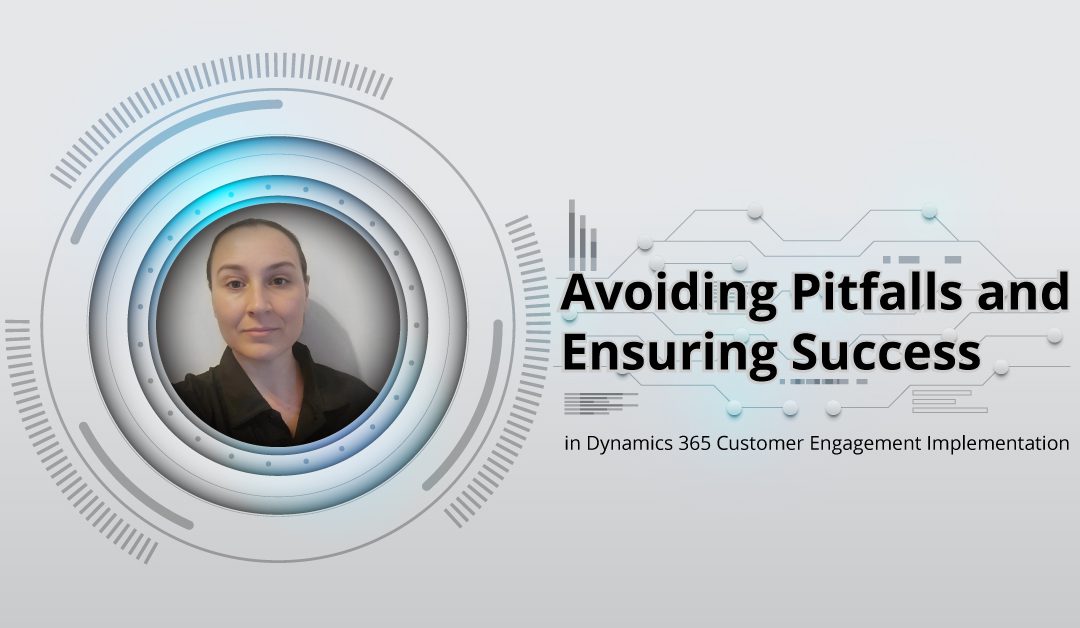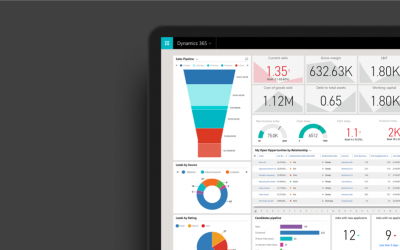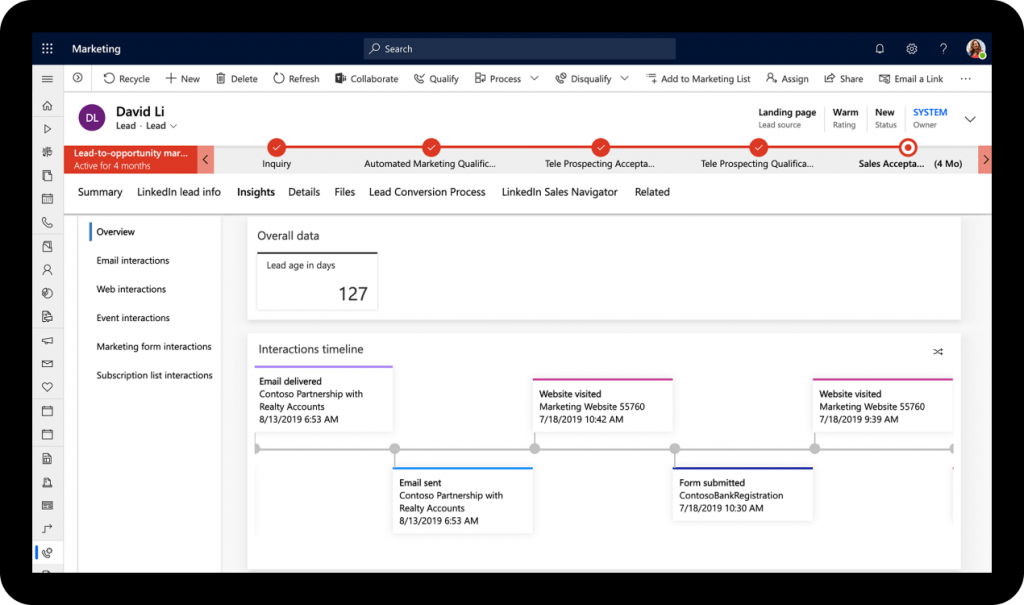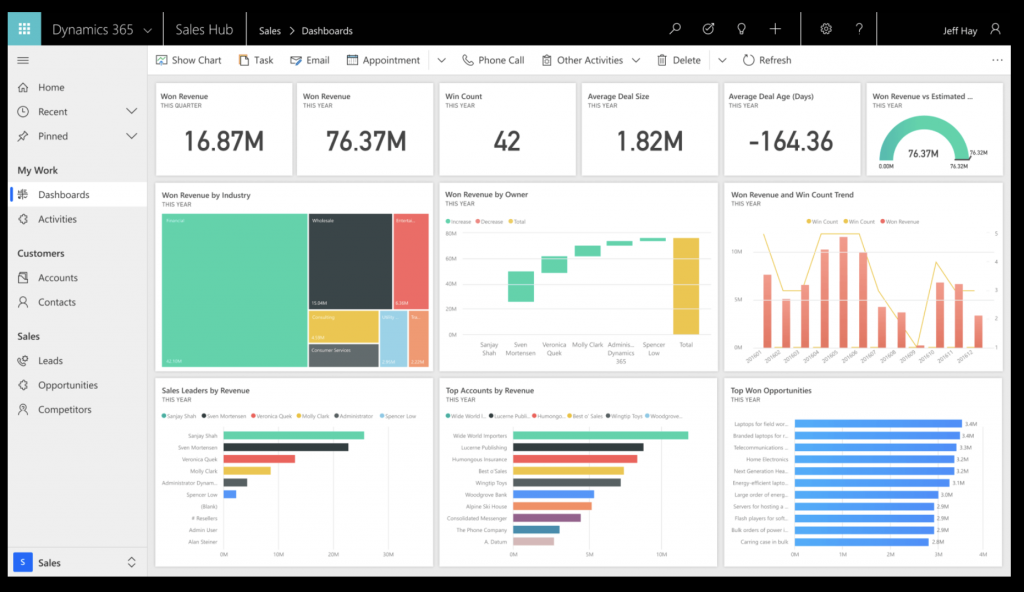No Results Found
The page you requested could not be found. Try refining your search, or use the navigation above to locate the post.


Implementing Dynamics 365 Customer Engagement can be a game-changer for organizations looking to enhance their digital presence and improve customer interactions. However, the path to successful implementation can be filled with potential pitfalls. Here are some common mistakes to avoid and best practices to follow to ensure a smooth and effective deployment.
Common Mistakes to Avoid
One of the most frequent mistakes organizations make is underestimating the customization needs of Dynamics 365. It’s crucial to tailor the system to fit specific business requirements to maximize its benefits. Ignoring data migration challenges can also lead to significant issues down the line. Proper planning and execution of data migration are essential to avoid disruptions. Overlooking user training is another common pitfall. Ensuring that users are well-trained and comfortable with the new system is vital for successful adoption. Additionally, inadequate change management can derail the entire project. It’s important to manage the transition effectively to minimize resistance and ensure a smooth rollout.
Importance of User Stories and Customer Commitment
User stories play a crucial role in ensuring that the implementation meets the needs of the end-users. They provide a clear and concise way to capture user requirements and expectations. Involving customers in the development of user stories ensures that the final product aligns with their needs and delivers value. Customer commitment to the project is equally important. Engaging customers early and maintaining their involvement throughout the project helps to align expectations, secure buy-in, and ensure a successful implementation. Regular communication and feedback loops with customers can help to address any concerns and make necessary adjustments to meet their needs.

Best Practices for Implementation
To set the stage for a successful implementation, it’s important to define clear objectives and key performance indicators (KPIs) from the outset. Engaging stakeholders early in the process helps to align expectations and secure buy-in. Developing a detailed implementation plan and providing comprehensive training and support are also critical components of a successful deployment.
Choosing the Right Implementation Method
Choosing the right implementation method is crucial for the success of any project. The Hybrid method combines elements of both Waterfall and Agile methodologies, providing flexibility to adapt to changes while maintaining a structured approach. It’s suitable for projects with well-defined requirements but also need iterative development. The Waterfall method follows a linear and sequential approach, where each phase must be completed before moving on to the next. It’s best for projects with clear, unchanging requirements and a fixed timeline. The Agile method focuses on iterative development and continuous feedback, allowing for flexibility and quick adjustments based on user feedback. It’s ideal for projects with evolving requirements and a need for rapid delivery.

Benefits of Using Tools Like Azure DevOps
Leveraging tools like Azure DevOps can significantly enhance the effectiveness of your implementation plan. Azure DevOps provides a unified platform for teams to collaborate effectively, ensuring everyone is on the same page. It supports continuous integration and continuous deployment (CI/CD), allowing for faster and more reliable software delivery. With robust project management tools, including agile planning, tracking, and reporting capabilities, Azure DevOps helps manage backlogs, sprints, and releases, ensuring that the project stays on track and meets deadlines. Additionally, it integrates with various testing and security tools, enabling teams to identify and address issues early in the development process. Azure DevOps is highly scalable, making it suitable for projects of any size and complexity, with flexible deployment options.
Integration Capabilities and Scalability
It’s essential to consider the integration capabilities of Dynamics 365 with existing systems and data. This ensures a seamless flow of information and enhances the overall efficiency of the organization. Additionally, choosing a solution that can scale with the growth of the organization ensures that the system remains effective and relevant as the business expands.

Customization vs. Over-Customization
While customization is essential, over-customization can lead to complications. It’s important to strike a balance to avoid unnecessary complexity. Proper customization ensures that the system meets specific business needs without becoming overly complicated and difficult to manage.
Testing and Validation
Thorough testing and validation before full deployment are crucial. This helps to identify and address any issues early on, ensuring a smooth rollout. Comprehensive testing ensures that the system functions as expected and meets the requirements of the organization.
Working with Experienced Partners
Working with experienced partners or consultants during the implementation process can provide significant benefits. Their expertise can help navigate challenges and ensure a successful deployment. Experienced partners bring valuable insights and best practices that can enhance the overall implementation process.

Preparing Your Organization
Preparing your organization for the upcoming changes involves clear communication of the benefits of the new system. Involving employees in the process and offering training and resources can help to ease the transition. Monitoring progress and making necessary adjustments ensures that the implementation stays on track.
Promoting User Adoption
Promoting user adoption is key to maximizing the benefits of Dynamics 365. Continuous education and highlighting the user benefits can encourage users to embrace the new system. Providing on-demand support and gathering feedback to make improvements can further enhance user satisfaction and adoption.
By avoiding common mistakes, following best practices, choosing the right implementation method, leveraging tools like Azure DevOps, and emphasizing the importance of user stories, customer commitment, integration capabilities, scalability, proper customization, thorough testing, and working with experienced partners, organizations can ensure a successful Dynamics 365 Customer Engagement implementation that delivers significant value and drives business success.
The CRM Team is a leading provider of customer relationship management (CRM) solutions, specialising in Microsoft Dynamics 365, monday.com, and custom integrations. We empower businesses to enhance their customer experiences and drive growth through innovative technology and personalised support.

Yolani Williams – Content Writer
Yolani Williams is the Content Writer at The CRM Team, with the role of producing relevant content such as blogs, articles, and social media copy. Yolani holds a qualification in Strategic Corporate Communication from the University of Johannesburg and has 3 years of relevant experience in the marketing field.
The page you requested could not be found. Try refining your search, or use the navigation above to locate the post.

Your experience with Dynamics 365 is about to change – the Unified Interface is here. This responsive experience for Dynamics 365 is becoming the primary and only experience for users, replacing WebClient. Here are the five things you should know about the sleek new Unified Interface to help you adapt to this change.
You now have consistent and equal functionality across all channels, from your computer through to mobile. What you see as an experience on your mobile device will be what you see and access on your computer. This consistency allows you to manage your client relationships and processes at any time, and on any device.
Timeline control replaces the activities wall within your forms. You can configure the timeline control to only show the information you want to, such as only notes or only phone calls. While the visual filtering capability allows you to drill down into your data, giving you a quick and accurate view of your client interactions.

You can display and access information in visually rich dashboards and charts to better engage with your business. This visualisation through custom controls adapts across all devices, giving you easy accessibility to valuable client information.

The Unified Interface is moving back to the tabbed experience for easier navigation. Having these tabs visible at the start of the form’s loading is a huge help – especially with forms that are heavy with data and client information.
The Unified Interface will be constantly updated with new features and optimised for enhanced client experiences. These upgrades are automatically made, so keep a lookout for new features.
Harness the Power of Customer Data with Dynamics 365 Customer Insights# AI, marketing strategies, consumer preferences, 360 degree view, omnichannel, customer dataDid you know that businesses that effectively use customer data are 23 times more likely to outperform...
Explore how AI and Microsoft Dynamics 365 transform sales procedures.# AI, sales strategies, consumer preferences, sales processes, sales teamsThe sales sector is advancing at an unprecedented pace, driven by technological progress and evolving consumer preferences....
The Role of the Business Analysis Process in Successful Project Delivery # Business Analysis, Project Delivery, Strategic Goals, Solution Design The Business Analysis Benchmark Report by PMI indicates that organisations with strong business analysis practices...
Discover More Stories

The level of data-security that Microsoft provide is far higher than many companies can afford to provide by themselves, and it is all included in the price, taking that worry away from you.
Upgrades, maintenance, and system administration are all managed at Microsoft. This means you won’t need to spend time or energy managing a dedicated IT department or contractors when servers go down or software updates mandate a system tweak.
Because there is not a big hardware install, your capital expenditure is much lower. So you benefit from better cash flow and greater flexibility, which reduces your overall costs.
You can add or remove users as your business requires them. So short-term projects become cost-effective, because you only pay for additional license fees for the duration of the project. And as your business grows, so does Microsoft Dynamics 365. Because it can run 100,000 users concurrently, Dynamics 365 will never cap your growth.
Time is money, and with the on-premise set up being far more complex, you will get a much quicker return in your business if you opt for an online system. The online system can be installed in a day and your business can be running it at its max in a matter of weeks, meaning you’ll quickly see a meaningful return on your investment.
Wherever your company expands to you’ll find that there’ll always be a Microsoft partner proficient in Dynamics 365 nearby. This means that help or advice will never be far away. With Microsoft Dynamics 365 currently operating in 40 countries in 41 different languages, it’s truly a global product.
With the world becoming more mobile, it’s essential that everyone in your business can access information wherever they are. With Dynamics 365 you don’t even need a laptop as you can get full functionality via your tablet or even your cell phone (Android, iOS, or Windows).
You only pay for the users that are active on the system. In traditional deployments you purchase a number of licenses up front but with Dynamics 365, you can adjust what you pay according to the needs of your business. So the cost is mainly an operational cost, and only increases as your business does.
Microsoft promise a 99.9% uptime or they will give you your money back. With multiple global data centres, you don’t need to worry about glitches or bugs, or even cyber attacks, as Microsoft has this covered, leaving you to focus on your core business.
Because we care about your data, if you go with us, we’ll place your data in centres in Europe, where the strict European laws ensure that your data remains your own. In contrast, if you house your data yourself, you come under the data protection laws of the country that you reside in.
If you are looking for a fully connected system so you can focus on your business, view Microsoft Dynamics 365 here!
The page you requested could not be found. Try refining your search, or use the navigation above to locate the post.
Discover More Stories